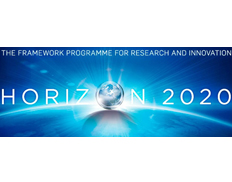Share
Print

Call Update
Jul 17, 2020 9:14:25 AM
The flash call info with the evaluation results as been published for this call, under the "Additional documents" section.
Apr 29, 2020 9:17:59 PM
On 28 April 2020, a total of 197 full proposals were submitted in response to the following 2020 topics:
MG-3-4-2020 (RIA) – 6 proposals
Apr 7, 2020 2:17:43 PM
Reacting to the Covid-19 crisis, the submission deadline for this topic has been extended to 28 April 2020 17:00:00 Brussels time.
20 Mar, 2020
A document on EASA support has been published under Topic Conditions / Additional Documents.
Dec 3, 2019 12:31:27 AM
The submission session is now available for: MG-3-4-2020(RIA)
Innovative electric network architectures and systems, optimising global energy, electrical power, data and communication for aviation
ID: MG-3-4-2020
Type of action: RIA Research and Innovation action
Deadline Model : single-stage
Planned opening date: 03 December 2019
Deadline: 21 April 2020 17:00:00 Brussels time Forthcoming
Horizon 2020
Work programme: Smart, green and integrated transport
Work programme year: H2020-2018-2020
Call name: 2018-2020 Mobility for Growth
Call ID: H2020-MG-2018-2019-2020
Specific Challenge:
Global energy aircraft optimisation is vital for both incremental as well as disruptive future aircraft configurations. It is key to modern More Electric Aircraft (MEA) architectures as well as their associated electric systems, which are now steadily replacing conventional pneumatic, hydraulic and mechanical ones. These latter developments are driven by manifold objectives aiming at significant weight savings, reduced maintenance and operating cost. However, increased electrification has also resulted in higher heat dissipation requirements from larger and more complex electrical systems as well as kilometres of copper wire, linking electrical systems, computers, displays, avionics, sensors, actuators, and cabin entertainment.
In addition to modern MEA architectures, unprecedented amounts of ground and flight data are increasingly available for aircrew, Air Traffic Management (ATM), airline operations, health monitoring and passenger connectivity. This adds to the complication, size and weight of electric power and data distribution on-board. Despite the rapidly evolving technology advancements in power electronics, fault tolerant electrical power distribution systems and electric-driven control systems, there is a need to look for low TRL technologies that deviate from established practices and existing certification routes.
Scope:
The main scope of this topic is the development of innovative solutions towards optimising electrical power, data, communication and processing networks in order to achieve weight and cost reduction, harness simplification, versatility and scaling, as well as ensuring high-speed connectivity, without jeopardising safety and security (incl. cybersecurity).
The proposals should address at least two of the following areas:
Next generation modular and distributed power data and wireless networks, enabling cable weight reduction and harness optimisation
Advanced technologies for electrical heat dissipation
Safe, secure, robust and reliable connectivity solutions, including advancements in unified data models, resilience to connection loss and cybersecurity specific barriers.
Advancements in interface standardisation with emphasis on software independency, modularity and portability, as well as standard hardware platforms.
Research on artificial intelligence and data-driven technologies and their applications for future aircraft electric network architectures and systems.
Proposals are expected to establish synergies with Clean Sky, SESAR, ECSEL, Galileo, EGNOS, HPC, Big Data and Artificial Intelligence R&I initiatives.
The proposals may include the explicit commitment from the European Aviation Safety Agency (EASA) to assist or to participate in the actions.
The Commission considers that proposals requesting a contribution from the EU between EUR 2 and 4 million would allow this specific challenge to be addressed appropriately. Nonetheless, this does not preclude submission and selection of proposals requesting lower or higher amounts.
Expected Impact:Maintaining and extending European industrial leadership.
Advance further innovative electric network architectures and systems.
Contribute to improved aircraft energy management for incremental as well as revolutionary future configurations.
Contribute to further weight reductions, simplicity and scalability, data connectivity while ensuring safety and security (incl. cybersecurity).
